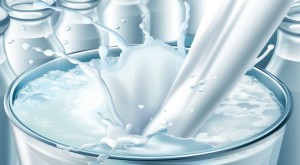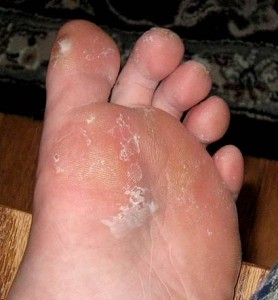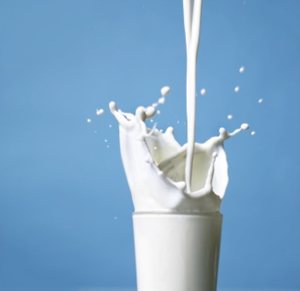The U.S. Centers for Disease Control reports that Mycobacterium bovis, one of several mycobacteria of the M. tuberculosis complex, is a global zoonotic pathogen that primarily infects cattle. Humans become infected by consuming unpasteurized dairy products from infected cows (1,2); possible person-to-person airborne transmission has also been reported (3).
 In April 2014, a man in Nebraska who was born in Mexico was determined to have extensive pulmonary tuberculosis (TB) caused by M. bovis after experiencing approximately 3 months of cough and fever. Four months later, a U.S.-born Hispanic girl from a nearby town who had been ill for 4–5 months was also determined to have pulmonary TB caused by M. bovis. The only social connection between the two patients was attendance at the same church, and no common dietary exposure was identified. Both patients had pulmonary cavities on radiography and acid-fast bacilli (AFB) on sputum-smear microscopy, indicators of being contagious (4). Whole-genome sequencing results of the isolates were nearly indistinguishable.
In April 2014, a man in Nebraska who was born in Mexico was determined to have extensive pulmonary tuberculosis (TB) caused by M. bovis after experiencing approximately 3 months of cough and fever. Four months later, a U.S.-born Hispanic girl from a nearby town who had been ill for 4–5 months was also determined to have pulmonary TB caused by M. bovis. The only social connection between the two patients was attendance at the same church, and no common dietary exposure was identified. Both patients had pulmonary cavities on radiography and acid-fast bacilli (AFB) on sputum-smear microscopy, indicators of being contagious (4). Whole-genome sequencing results of the isolates were nearly indistinguishable.
Initial examination of 181 contacts determined that 39 (22%) had latent infection: 10 (42%) of 24 who had close exposure to either patient, 28 (28%) of 100 who were exposed to one or both patients in church, and one (2%) of 57 exposed to the second patient at a school. Latent infection was diagnosed in six contacts on follow-up examination, 2 months after an initial negative test result (4), for an overall latent infection rate of 25%. No infected contacts recalled consuming unpasteurized dairy products, and none had active TB disease at the initial or secondary examination. Persons who have M. bovis TB should be asked about consumption of unpasteurized dairy products (2), and contact investigations should follow the same guidance as for M. tuberculosis TB (4).
Human M. bovis disease is typically attributed to consumption of unpasteurized milk (or dairy products made from unpasteurized milk) in or imported from countries with affected cattle herds (1,2,7,8). Person-to-person airborne transmission of M. bovis has been reported infrequently, with uncertainty remaining about dietary exposures (3). Findings from contact investigations and a population study regarding infectiousness of M. bovis compared with M. tuberculosis are inconclusive (4,9,10).††
Standard nucleic acid amplification test methods detect the M. tuberculosis complex without distinguishing between M. tuberculosis and M. bovis. Although these species can be distinguished by routine genotyping, biochemical characterization and drug susceptibility testing, which generally provide results earlier, have been historically used and can increase the index of suspicion for M. bovis. Whole-genome sequencing can be used to identify species and investigate transmission. NVSL sequences genomes for all U.S. M. bovis animal isolates, a convenience sample of cattle isolates from Mexico, and human isolates upon request.§§
Patient A might have been infected from consuming unpasteurized dairy products originating in Mexico. The timing of the illnesses, relatedness of the M. bovis isolates, and common church attendance suggest that patient B might have acquired infection from patient A. Findings from the contact investigations suggest possible airborne transmission, because approximately one third of the infections could not be explained by potential exposure in countries where M. tuberculosis complex infections are common. Consumption of imported contaminated dairy products could not be excluded, but locally produced dairy products were unlikely to be contaminated with M. bovis.
This report adds to the evidence for airborne person-to-person spread of M. bovis (3,9,10). Whole-genome sequencing is an emerging tool for investigating transmission. Public health responses to M. bovis pulmonary TB should be the same as those for M. tuberculosis TB, with additional inquiries about consumption of unpasteurized dairy products. The ongoing incidence of M. bovis TB in humans substantiates the need to control bovine tuberculosis globally and to pasteurize all milk and dairy products.
Possible airborne person-to-person transmission of Mycobacterium bovis- Nebraksa 2014
Centers for Diesease Control and Prevention Morbidity Weekly Report
Bryan F. Buss, DVM; Alison Keyser-Metobo, MPH; Julie Rother; Laura Holtz; Kristin Gall, MSN; John Jereb, MD; Caitlin N. Murphy, PhD; Peter C. Iwen, PhD; Suelee Robbe-Austerman, DVM; Melissa A. Holcomb, DVM; Pat Infield
http://www.cdc.gov/mmwr/volumes/65/wr/mm6508a1.htm?s_cid=mm6508a1_e
 Teagasc’s Dr. David Gleeson says the Irish dairy industry has lost markets in the EU due to the excessive levels of iodine in milk, adding, “We have way too much iodine in our milk.”
Teagasc’s Dr. David Gleeson says the Irish dairy industry has lost markets in the EU due to the excessive levels of iodine in milk, adding, “We have way too much iodine in our milk.”





 deferring to government standards (the lowest kind), clueless about communication with its own snappy catchphrase — a rich source of dairy carbohydrate — and deep in denial about public disclosure.
deferring to government standards (the lowest kind), clueless about communication with its own snappy catchphrase — a rich source of dairy carbohydrate — and deep in denial about public disclosure. He fears the droppings may also result in salmonella in his cattle’s dairy milk.
He fears the droppings may also result in salmonella in his cattle’s dairy milk. disputes, the official Xinhua News Agency reported today.
disputes, the official Xinhua News Agency reported today.